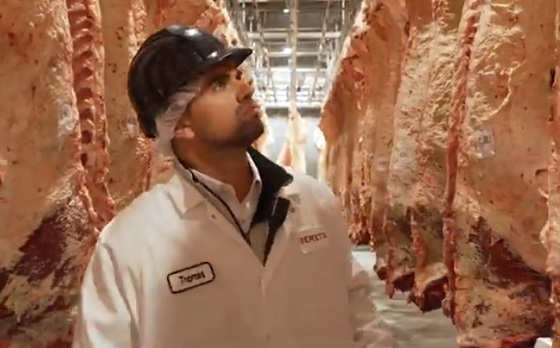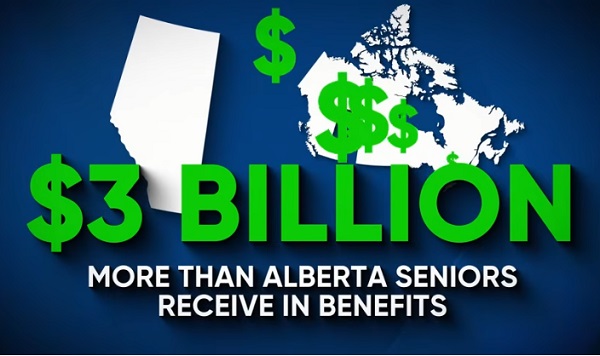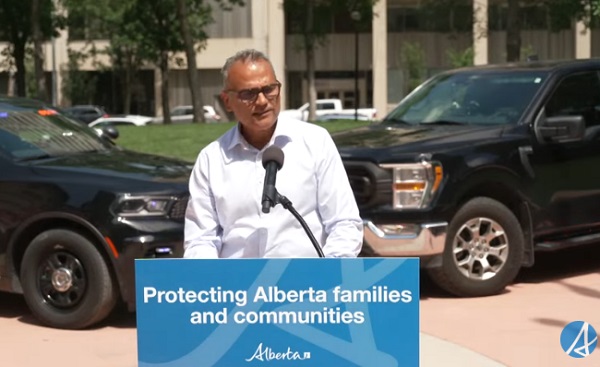Alberta
Free rapid tests, gathering rules eased slightly for Christmas season, and boosting boosters
Protecting Albertans against the Omicron variant
Alberta is taking immediate actions and clarifying health measures to protect Albertans and the health-care system against the highly transmissible Omicron variant of the COVID-19 virus.
Expanding rapid testing
Alberta’s rapid testing program is expanding to allow all Albertans to have access to free rapid tests. Test kits of five individual tests will be available at select Alberta Health Services sites and select pharmacies starting Dec. 17. More than 500,000 rapid antigen test kits will initially be available for at-home use. Rapid test kits will also be made available at more schools and for vulnerable populations.
Expanding vaccine boosters
As of Dec. 15, Albertans aged 50 and older and all health-care workers who had their second dose six months ago or longer can book a third dose of an mRNA COVID-19 vaccine to increase their protection against the virus. This will make up to 700,000 more Albertans eligible to book boosters.
Ramping up health system capacity
Alberta Health is working with Alberta Health Services on planning to restore intensive care unit surge capacity if Omicron begins to put pressure on the health-care system. Alberta Health is also reviewing policies for health-care worker exposure, infection prevention and control, and visitors to acute/continuing care sites.
Clarifying health measures
Albertans are being asked to observe public health measures over the holidays around social gatherings, masking and personal practices. Indoor social gatherings will remain limited to 10 people. This applies to Albertans aged 18 and over, with no limits on those under 18. Additionally, there will be no limits on number of households and no distinction between vaccine and unvaccinated attendees. With these modest changes, Alberta’s social gathering restrictions remain among the most stringent in Canada.
“We are closely monitoring developments around the Omicron variant and are taking immediate action to protect Albertans and slow the spread in our province. We strongly encourage Albertans to do their part to address the threat of Omicron by getting a booster dose, using rapid tests when appropriate and following Alberta’s public health guidelines.”
“More Albertans are choosing to be vaccinated and following public health measures, which is helping protect Alberta’s health system. However, as with past variants, Omicron has the potential to change the situation quickly. Immediately expanding access to booster doses and offering free rapid testing will allow Albertans to identify infections and protect against them.”
“We are expanding our successful at-home rapid testing program to help parents, students and staff feel even more confident about learning safely in the classroom. It’s another layer of protection, together with vaccines and public health measures, to keep school communities safe.”
“Vaccines remain the most effective tool we have against COVID-19. It is especially important to get the booster dose when eligible with emerging information about third doses being more effective against the Omicron variant. Vaccines give good protection against severe disease and hospitalization but their effectiveness can decrease over time, especially with this new variant. I encourage eligible Albertans to take advantage of the increased protection that third doses offer, even if they have had a previous COVID-19 infection.”
Booster eligibility expansion
Starting Dec. 15, Albertans aged 50 and older and all health-care workers can book a third dose of an mRNA COVID-19 vaccine if they received their second dose at least six months before.
Eligible individuals can book appointments for third doses online with participating pharmacies or AHS by using the Alberta vaccine booking system. Albertans can also call 811, participating pharmacies or participating physicians’ offices.
Albertans who were previously eligible for third doses continue to be able to book their appointments. For information on eligibility, visit alberta.ca/vaccine.
At-home rapid test kits
Starting Dec. 17, Albertans can pick up a free BTNX rapid test kit from 700 select pharmacies in Edmonton, Calgary and Red Deer, and 140 select Alberta Health Services sites in other communities. To find a location, visit alberta.ca/CovidRapidTests. As more tests become available from Health Canada, more locations will be added.
Kits will be available on a first-come, first-served basis. To ensure as many Albertans have access as possible, there is a limit of one box of tests within a 14-day period per person. Albertans can pick up one additional box for another person(s) who cannot pick one up themselves provided they have each individual’s health care number.
Each BTNX rapid test kit contains five rapid tests. For maximum benefit, an individual should use two tests each week, 72 hours apart. Tests are of particular benefit for those who have had a recent COVID-19 exposure. Each test kit includes an information sheet with details on how and when to use the test.
These tests are intended for at-home personal use for regular screening in asymptomatic people. Albertans who screen positive on a rapid test or who have COVID-19 symptoms should book a confirmatory PCR test through Alberta Health Services and must isolate for 10 days or until they receive a negative PCR test result.
In-home rapid tests will also be made available to foster families and kinship caregivers with school-aged children.
Albertans who are looking for tests for their workplace are encouraged to access tests through their employers’ rapid test programs. If an employer does not provide tests, Albertans must provide documentation from privately paid tests.
The rapid test kits provided for free through Alberta’s rapid testing programs cannot be used for the Restrictions Exemption Program (REP), which requires privately paid test results.
Additionally, the rapid test kits cannot be used for travel. They do not include appropriate documentation, so Albertans should not attempt to use them for domestic or international travel needs.
School rapid testing program
All K-6 schools on alert status (two or more cases in the last 14 days who were present at school while infectious) can now request rapid test kits. Participation in the program is optional for schools, parents and staff.
Eligible schools can submit a K-6 at-home rapid testing program request form. More information is available online.
To date, more than 90 schools have requested tests for students and staff and more than 35,000 students and staff have accessed rapid tests through this program.
All rapid tests are only for people without COVID-19 symptoms. If an individual has COVID-19 symptoms, they must not use a rapid test. They should stay home, isolate and book a test through Alberta Health Services with the online assessment tool or by calling 811.
Rapid testing program
Rapid tests continue to be available to any public, private or not-for-profit employer or service provider with an approved COVID-19 screening program.
Organizations can continue to apply at alberta.ca/rapidtesting or with their local chamber of commerce.
Social gathering changes
Effective immediately, indoor private social gatherings will no longer be limited to two households. The maximum number of individuals 18 years and older permitted is 10. In addition, there will be no distinction between vaccinated and unvaccinated Albertans.
The temporary state of public health emergency has lapsed. However, all other current public health restrictions remain in effect, including mandatory masking in indoor public places.
Outdoor social gathering capacity remains at 20 people, regardless of vaccination status. Physical distancing between households is required.
Agriculture
Lacombe meat processor scores $1.2 million dollar provincial tax credit to help expansion

Alberta’s government continues to attract investment and grow the provincial economy.
The province’s inviting and tax-friendly business environment, and abundant agricultural resources, make it one of North America’s best places to do business. In addition, the Agri-Processing Investment Tax Credit helps attract investment that will further diversify Alberta’s agriculture industry.
Beretta Farms is the most recent company to qualify for the tax credit by expanding its existing facility with the potential to significantly increase production capacity. It invested more than $10.9 million in the project that is expected to increase the plant’s processing capacity from 29,583 to 44,688 head of cattle per year. Eleven new employees were hired after the expansion and the company plans to hire ten more. Through the Agri-Processing Investment Tax Credit, Alberta’s government has issued Beretta Farms a tax credit of $1,228,735.
“The Agri-Processing Investment Tax Credit is building on Alberta’s existing competitive advantages for agri-food companies and the primary producers that supply them. This facility expansion will allow Beretta Farms to increase production capacity, which means more Alberta beef across the country, and around the world.”
“This expansion by Beretta Farms is great news for Lacombe and central Alberta. It not only supports local job creation and economic growth but also strengthens Alberta’s global reputation for producing high-quality meat products. I’m proud to see our government supporting agricultural innovation and investment right here in our community.”
The tax credit provides a 12 per cent non-refundable, non-transferable tax credit when businesses invest $10 million or more in a project to build or expand a value-added agri-processing facility in Alberta. The program is open to any food manufacturers and bio processors that add value to commodities like grains or meat or turn agricultural byproducts into new consumer or industrial goods.
Beretta Farms’ facility in Lacombe is a federally registered, European Union-approved harvesting and meat processing facility specializing in the slaughter, processing, packaging and distribution of Canadian and United States cattle and bison meat products to 87 countries worldwide.
“Our recent plant expansion project at our facility in Lacombe has allowed us to increase our processing capacities and add more job opportunities in the central Alberta area. With the support and recognition from the Government of Alberta’s tax credit program, we feel we are in a better position to continue our success and have the confidence to grow our meat brands into the future.”
Alberta’s agri-processing sector is the second-largest manufacturing industry in the province and meat processing plays an important role in the sector, generating millions in annual economic impact and creating thousands of jobs. Alberta continues to be an attractive place for agricultural investment due to its agricultural resources, one of the lowest tax rates in North America, a business-friendly environment and a robust transportation network to connect with international markets.
Quick facts
- Since 2023, there are 16 applicants to the Agri-Processing Investment Tax Credit for projects worth about $1.6 billion total in new investment in Alberta’s agri-processing sector.
- To date, 13 projects have received conditional approval under the program.
- Each applicant must submit progress reports, then apply for a tax credit certificate when the project is complete.
- Beretta Farms has expanded the Lacombe facility by 10,000 square feet to include new warehousing, cooler space and an office building.
- This project has the potential to increase production capacity by 50 per cent, thereby facilitating entry into more European markets.
Related information
Alberta
Alberta Next: Alberta Pension Plan

From Premier Danielle Smith and Alberta.ca/Next
Let’s talk about an Alberta Pension Plan for a minute.
With our young Alberta workforce paying billions more into the CPP each year than our seniors get back in benefits, it’s time to ask whether we stay with the status quo or create our own Alberta Pension Plan that would guarantee as good or better benefits for seniors and lower premiums for workers.
I want to hear your perspective on this idea and please check out the video. Get the facts. Join the conversation.
Visit Alberta.ca/next
-

 Agriculture2 days ago
Agriculture2 days agoCanada’s supply management system is failing consumers
-

 Alberta1 day ago
Alberta1 day agoAlberta uncorks new rules for liquor and cannabis
-

 Energy19 hours ago
Energy19 hours agoB.C. Residents File Competition Bureau Complaint Against David Suzuki Foundation for Use of False Imagery in Anti-Energy Campaigns
-

 COVID-1919 hours ago
COVID-1919 hours agoCourt compels RCMP and TD Bank to hand over records related to freezing of peaceful protestor’s bank accounts
-

 Crime1 day ago
Crime1 day agoProject Sleeping Giant: Inside the Chinese Mercantile Machine Linking Beijing’s Underground Banks and the Sinaloa Cartel
-

 International1 day ago
International1 day agoTrump transportation secretary tells governors to remove ‘rainbow crosswalks’
-

 Alberta23 hours ago
Alberta23 hours agoAlberta Next: Alberta Pension Plan
-

 C2C Journal17 hours ago
C2C Journal17 hours agoCanada Desperately Needs a Baby Bump



